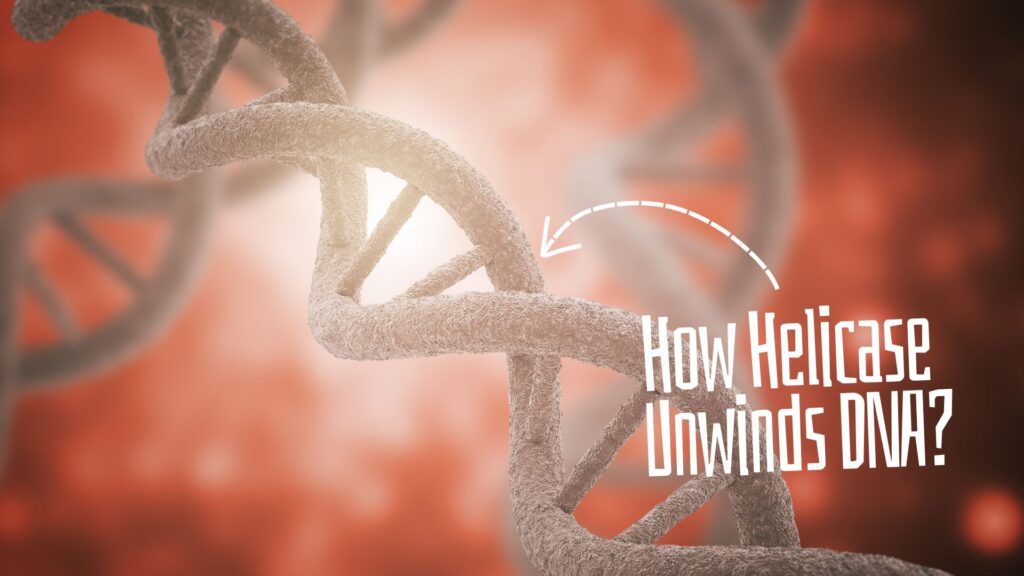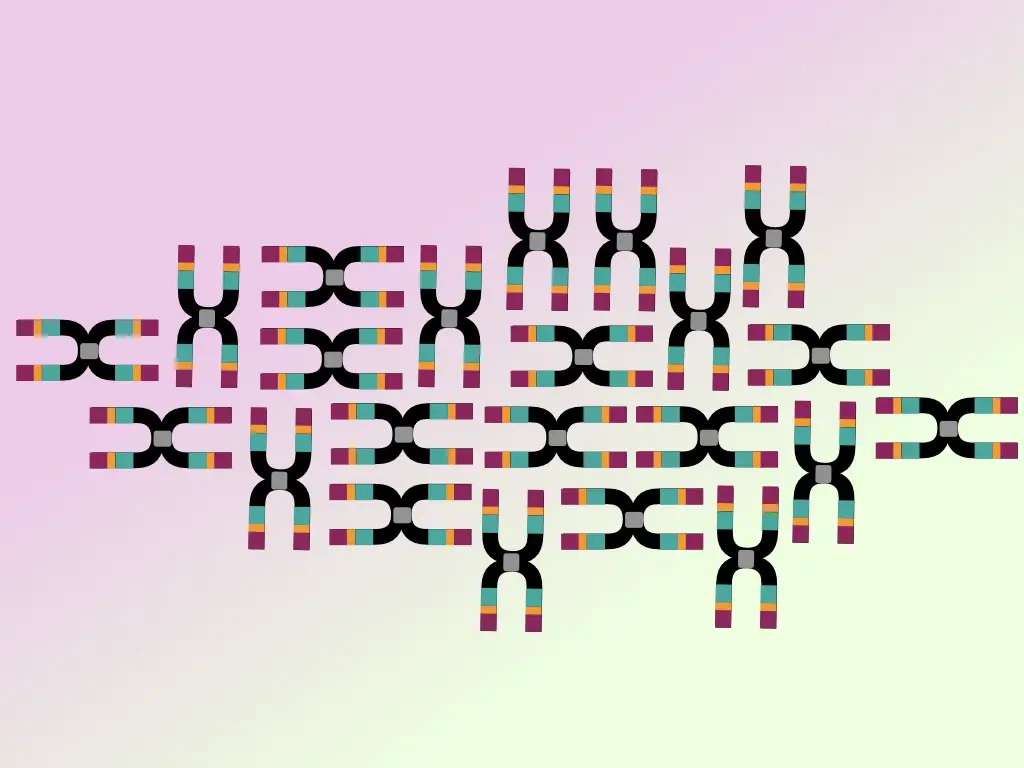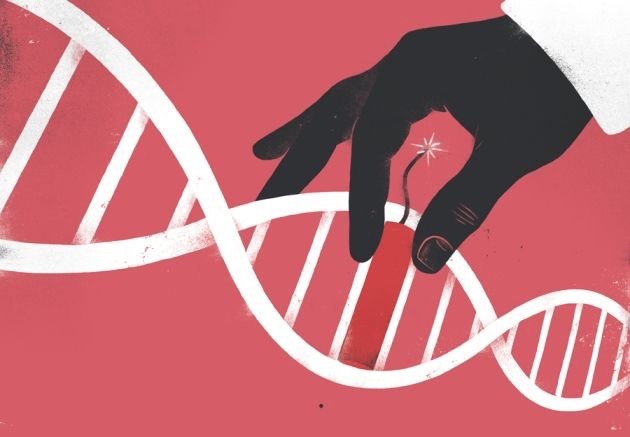“DNA helicase is a class of enzymes that helps to unwind the double-stranded DNA and allow replication. Learn about the structure, function and mechanism for DNA helicase.”
In the previous two articles of this series, we discuss the general process of replication and prokaryotic DNA replication. Now, moving ahead in this series and let’s understand the replication process better, we will learn about various enzymes that govern the replication process.
Starting with the helicase, we will discuss primase, SSB, polymerase and ligase in each article. Now, starting with the DNA helicase.
DNA helicase is known as a ‘molecular motor’ because it works like a rotating motor, moves forward and breaks open the DNA. How? Let’s find out. In this article, we will know the helicase, its structure, function and biological importance.
Stay tuned.
Disclaimer: The present article is reviewed and written using the peer-reviewed sources available. Sources are provided at the end of the article.
Key Topics:
What is Helicase?
Helicase is a class of enzymes whose main function is to break open or unwind nucleic acid. Two types of helicases are DNA and RNA helicases. The helicase was first identified in E. coli in 1976. However, the first eukaryotic DNA helicase was discovered in 1978. ~1% of the human genome encodes genes for various helicases.
31 DNA helicases and 64 RNA helicases are encoded by these genes. One significantly important property of the helicase enzyme is that it requires an energy molecule to execute its desired function.
| Organism | Numbers of helicase |
| Bacteriophage | 6 |
| Viruses | 12 |
| human | 25 |
| Yeast | 15 |
| Plant | 8 |
Because replication is a universal process for all living beings, helicase is present in all living organisms– prokaryotes and eukaryotes. However, only DNA helicase plays a crucial role in replication.
RNA helicase, on the other side, is involved in RNA metabolism such as– destabilization of RNA secondary structure, RNA splicing, regulating RNA functions and ribosome assembly, etc.
DNA-RNA helicase is also found which works to separate DNA-RNA hybrids and regulate transcription termination.
DNA helicase is most important for us because of its role in replication, disease development and biological experiments, thus, we will discuss DNA helicase in detail here.
Types of Helicase:
| DNA helicase | Unwinds DNA and works during replication. |
| RNA helicase | Unwinds RNA and works in the destabilization of RNA secondary structure, RNA splicing, regulating RNA functions and ribosome assembly |
| DNA-RNA helicase | Unwinds RNA-DNA hybrid and regulates transcription termination. |
What is DNA Helicase?
DNA Helicase is an ATP-dependent catalytic enzyme that dedicatedly works to unwind/unzip/break open the DNA. By unwinding the dsDNA, it separates the leading and lagging strands for replication to occur.
Henceforth, it works ahead of the replication fork and makes available a single-stranded template DNA from the polymerase to work. Because, unless the DNA helicase unwinds the DNA, the polymerase can’t synthesize a new DNA.
Put simply, you can consider DNA polymerase as a jet engine. It can rotate 10,000 times in a minute, move ahead continuously and do its job.
Structure of DNA Helicase:
Numerous helicases every organism’s genome contains, thus, structural variations are also reported. Majorly, the helicases are circular and contain Monomer, Dimer or Hexamer units.
However, it’s notable that all the helicases contain a conserved sequence motif in their catalytic core or active site. This motif is indeed involved in the catalytic activity. It uses ATP, makes the enzyme active, performs hydrolysis and breaks hydrogen bonds between two DNA molecules.
Common conserved motifs in DNA helicase are Walker A (Motif I), Walker B (motif II), Motif III, motif IV, motif V, motif VI and motif Q. DNA helicase is hexameric in structure. It’s a ring-like structure having six different subunits in the surroundings.
A specialized domain known as AAA+ is also known as a nucleotide-binding site. The AAA+ domain is a catalytic site where the enzyme first interacts with the DNA nucleotides.
DNA Helicase superfamilies:
Helicase possesses a conserved sequence motif in their structure which has been used to categorize them into various subfamilies. Based on that, it is divided into six superfamilies– SF1, SF2, SF3, SF4, SF5 and SF6.
Here, the SF1 and SF2 can’t form the ring structure while the others can. Based on this characteristic, the superfamilies are further divided. The classification is given here.
Mechanism:
Now, we all know what the function of a DNA helicase is. But the question is how helicase execute it. What’s the mechanism?
The catalytic activity of DNA helicase starts by recognizing the dsDNA strand. Interestingly, for in vitro DNA unwinding, the helicase requires a short stretch of the ssDNA, unlike the normal replication process.
To better understand the concept, imagine the DNA helicase as a rotating engine that is moving forward. Helicase works exactly the same as you draw the image in your mind. It moves forward at the rate of one nucleotide per hydrolysis reaction.
Different motifs are present in its structure to execute different functions. First, the ATP converts into ADP and releases the energy which is utilized to activate the jet engine of helicase.
The human hexameric helicase has a central hollow part in which the DNA binding motif is present. AAA+ is a nucleotide or DNA-binding protein that first came into action. Once the DNA enters the hollow part, the motifs Walker A and Walker B start hydrolyzing ATP and release energy to break the hydrogen bond.
Once it starts spinning, it breaks the hydrogen bonds. It moves forward, again, for another round– utilizes another ATP, hydrolyzes the hydrogen bonds and unzips the DNA.
Note that during the process, only a single strand from the dsDNA strand passes from the hollow catalytic core of the enzyme. Some helicase works bidirectional while other works unidirectional.
For instance, the ReBCD helicase performs the catalytic activity in both directions– 5’ to 3’ and 3’ to 5’ while the RecB helicase performs the enzymatic reaction unidirectionally, only from 3’ to 5’.
The in-depth molecular mechanism of helicase working is a bit complicated and boring. I have given a short explanation that makes sense.
Functions of DNA Helicase:
The primary function of the DNA helicase is now known to us— unwinding the dsDNA during replication. Although, the same function is required for so many DNA metabolic activities. And therefore helicase also works for many cellular activities as well.
Unwinding during replication occurs by the joint venture of DNA helicase, single-stranded binding protein, Primase and polymerase.
DNA helicase has a crucial function in various DNA repair pathways. In the repair process, the enzyme unwinds the target location for repair. Such activities help maintain the genetic code intact generation after generation. For example, XPB and XPD helicases help in nucleotide base excision repair.
It also helps in transcription termination and regulation. For instance– Rho helicase. Here it helps unwind a double-stranded gene region and makes it available for RNA polymerase to synthesize the mRNA.
Here, it allows the entry of not only the RNA polymerase but also for other transcriptional factors as well. Conclusively, it regulates the transcription termination process.
Importantly, one helicase often known as DNA/RNA helicase is involved in the unwinding of DNA-RNA duplex formed at the end of this process.
DNA helicase known as a recombinational helicase also works during recombination, particularly, homologous recombination. The enzyme, known as E.coli RecBCD functions during the strand exchange and helps completion of recombination.
The telomeric helicase has a crucial function in preventing telomere shortening.
Studies also suggest that several types of helicase work as a sensory helicase as well. Meaning, that it recognizes any DNA damage or unusual structure and gives a signal for activation of the repair pathway.
In addition, helicase also helps in maintaining the proper share and stability of the DNA. Such helicases are known as ‘structural helicases.’ These enzymes particularly find loops, secondary structures, knots or any abnormal secondary structure in DNA and give the signal to repair it.
So these are some of the crucial functions of a DNA helicase enzyme that it performs for our cell.
| Helicase | Function |
| PcrA1, RepA, Dna2, NS3, RecD, TraI, HSv UL9, Dna B | DNA replication |
| Dna2, WRN, Pif1 | Okazaki fragment maturation at the lagging strand |
| Factor 2, Rho, SWI2, SNF2, TFIIH | Transcription |
| Rtel1, BLM, Rho, PriA, UvrD, RecQ, RecG, RecBCD, Tra I | Recombination |
| RuvB, Mph 1, RecQ, WRN, Helicase E, UvrD, RecD2 and RecQ | DNA repair mechanism |
| Vasa, HSV UL5, RHA and eIF4A | Translation |
| BLM, Rtel 1, Pif1, Dna2 | Telomere maintenance |
| BLM, ATRX, Rad54 | Chromatid remodeling |
| TFIIH | Transcription activation |
| TFIIH, SNF1 | Translation initiation |
| SW1, TFIIH, SW1, Rho and Factor 2 | Maintenance, DNA repair and translation termination |
Helicase and diseases:
DNA helicase is an important enzyme for DNA metabolism, therefore, abnormal enzyme structure or function results in abnormalities in either replication, transcription or translation.
For example, ATRX, XPD and RecQ mutations are commonly reported mutations in a helicase that are associated with serious health complications. Premature aging, mental retardation, immunodeficiency and even cancer, are several serious complications caused by mutations in coding regions of helicase genes.
Moreover, Bloom’s syndrome, alpha-thalassemia, xeroderma pigmentation and Cockayne syndrome are a few examples of known diseases in which helicase abnormalities are involved.
Wrapping up:
DNA helicase is significantly important for replication. In fact, for many DNA activities. Its primary function is to open up the dsDNA, thus, replication succession highly depends on how the helicase works.
To understand it, you can consider it as a rotating, large, jet engine, which is moving forward in a circular motion. Many helicases are reported and present in different organisms.
We will explore the topic more comprehensively in our upcoming article. We will discuss how helicase mutations are associated with various diseases in our upcoming article. I hope you like this article.
Source:
Brosh RM Jr. Special Issue: DNA Helicases: Mechanisms, Biological Pathways, and Disease Relevance. Genes (Basel). 2021 Mar 1;12(3):356. doi: 10.3390/genes12030356. PMID: 33804438; PMCID: PMC8000711.


